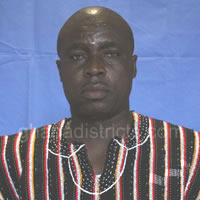INFORMATION COMMUNICATION TECHNOLOGY
Introduction
Information Communication Technology (ICT) is a term used for a group of electronic technologies and techniques used to manage information and knowledge. ICT is recognized as an important knowledge-based tool necessary for socioeconomic developments. The role of ICT in the economy of Ghana has been widely recognized even though it has not been fully experienced at the District levels. The recognition is reflected in the development and deployment of a national ICT infrastructure, institutional and regulatory framework for managing the sector, promoting the use of ICT in all sectors of the economy, implementing e-governance in all government institutions and the construction of a National Data Centre as well as Regional and District Information Centres across the country.
The increasingly importance of ICT led the Ghana Statistical Service to include it in the 2010 PHC. The census sought information on the ownership of mobile phones, usage of desk top computers, laptop computers and internet facilities by individuals and households. The objective of this chapter is to analyze the extent of individual ownership of mobile phones and the use of internet among the population aged 12 years and older, and use of fixed telephone lines and ownership of and older, and use of fixed telephone lines and ownership of
Ownership of Mobile Phone
Table 5.1 presents data on population 12 years and older who own mobile phones and the number of households that uses internet. In all, out of the population of 31,639, those who own mobile phones are 10,800. This constitutes about 34.1 percent of the population in the District. There is a relatively low mobile phone penetration in the District. The proportion of males owning mobile phone is 39.3 percent as compared to 28.4 percent of females.
Use of Internet
Information on the use of internet by households among the population 12 years and older is presented in Table 5.1. The number of persons using internet facilities is 1.4 percent, which is less than two percent of the District’s population. Proportionally, slightly over twice males (1.9%) than females (0.9%) use internet facilities.
Introduction
The 2010 PHC collected data on the social characteristics of the population in the Dormaa West District. These characteristics include household size and composition, marital status, nationality,
religious affiliation and literacy and education. This chapter focuses on a descriptive analysis of these characteristics in the District.
Household Size, Composition and Headship
Data on household size, composition and headship constitute the basis for planning economic and social services needed by the population. It is within this context that the 2010 PHC gathered data on these indicators for planning purposes.
A household is defined as “a person or a group of persons, who live together in the same house or compound, share the same house-keeping arrangements and recognize one person as the head of household” (GSS, 2013). A household may include a man, his wife, children, distant relatives, or a housekeeper living with them. Visitors who spent the census night with the household were also enumerated as members of the household as individuals.
Household size
The household is a basic unit demographic and economic analysis. Household size refers to the total number of persons in a household irrespective of age, sex, or relationship status. Table 3.1 presents the household size of the District by locality. The District has 10,327 households which represent 2.1 percent of the 490,515 households in the region. The District has an average of 1.2 households per house and an average household size of 4.5 persons. Slightly over three-quarters of the households in the District (76.5%) are in the rural areas while the remaining 23.5 percent are located in the urban areas. The average number of households per house and the average household size are almost the same for both urban and rural areas.
Household headship
The household head is the person who is recognized by members as the leader of the household though he/she may not necessarily take care of every member of the household in terms of financial and livelihood responsibilities. Table 3.2 shows that 22.0 percent of the total household population by composition and sex are household heads. There are proportionally more male household heads (31.1%) than female household heads (12.1%).
This situation could be attributed to age-long cultural practices which appear to be weakening given the significant proportion of households which are headed by females. Traditionally, men are considered as leaders of their households. Men also have greater access to land and other resources and greater economic power compared to women. These factors increase the chance of men being accepted as household heads.
Household composition
Household composition refers to the patterns of relationships between the head of household and other members of the household. The composition includes relationships such spouse (wife/husband), child (son/daughter), grandchild, parent/parent-in-law, brother/sister, other relative and non-relative. As indicated earlier, information from Table 3.2 indicates that about one in five of the household population is the household head (22.0%). Biological children (son and daughter) constitute 43.0 percent of household members. Spouse (wife/husband) makes up 11.6 percent and "extended family" members (grandchild, brother/sister and other relatives of the head) together comprise 18.0 percent of household members. Adopted/foster children comprise only 0.4% of household members.
Household population by structure and sex
Household structure is defined as the classification of persons who constitute households and the type of relationship among the household members. The classification of households can be nuclear or extended or based on different combinations of both. Ten categories of household structure are identified. These are (1) Head only, (2) Head and spouse only, (3) Nuclear (Head spouse(s) and children), (4) Single parent nuclear, (5) Extended + Non-relatives, (6) Head spouse(s) and other compositions, (7) Extended Head spouse(s) children heads’ relatives, (8) Single parent extended, (9) Single parent extended + non-relative and (10) Head and other composition but no spouse.
Table 3.3 indicates that the nature of the family structure observed in the District underscores the strength of both nuclear family and extended family systems, and an emerging single parent family system. About 45 percent of the household structures are those of nuclear family while 55.0 percent of the structures are linked to extended family households. The emerging phenomenon of single parent family structure, both nuclear and extended, takes a significant proportion of the family systems making up 21.9% of the household population. This may be due to out-migration of male spouses or in-migration of female parents alone to work in the District. Marital disruptions (divorce, separation and widowhood) may also account for the rise in single parent family structures.
When household structures are disaggregated into the male and female components, the proportion of males in the nuclear family households (43.9%) is more than that of females (41.6%). On the other hand, the proportion of females (58.4%) in the extended family household is more than that of males (56.1%). This may be attributed to the single parent extended households, where the proportion of females is 16.5 percent compared to the proportion for males of 12.0 percent. The District is a traditional matrilineal society. Matrilineal cultural practices and/or marital disruptions may account for the dominance of females in the single parent extended households. Single parent families (both nuclear and extended seem to include a higher proportion of members who are females).
Date Created : 11/23/2017 5:32:45 AM






 facebook
facebook X (twitter)
X (twitter) Youtube
Youtube +233 593 831 280
+233 593 831 280 0800 430 430
0800 430 430 GPS: GE-231-4383
GPS: GE-231-4383 info@ghanadistricts.com
info@ghanadistricts.com Box GP1044, Accra, Ghana
Box GP1044, Accra, Ghana